Welcome, heroes, to the electrifying arenas of Marvel Rivals! In this high-octane 6v6 shooter, your aim is crucial, your abilities are game-changing, but one truth towers above all: movement is life. The dynamic battlefields of Marvel Rivals demand more than just standing your ground; they call for acrobatic feats, lightning-fast repositioning, and a mastery of vertical space. Skillful movement isn't just for flashy plays—it's the very essence of survival, the art of outplaying your opponents, and the key to unlocking your true potential.
This guide will transform any ground-bound rookie into an aerial acrobat, a battlefield phantom, or an unstoppable force by breaking down the three core pillars of advanced traversal: Wall-Climbing & Wall-Running, Dashing, and Grappling & Swinging. Prepare to learn how these mechanics work, how to practice them until they're second nature, and how to use them to discover map-altering shortcuts and execute truly legendary plays. Mastering these movement arts is a journey, and it's one that unlocks a more rewarding, personalized, and thrilling play experience, allowing for incredible player expression on a battlefield where the skill ceiling is as high as your hero can soar.
Universal Movement & Controls
Before leaping off skyscrapers or zipping across chasms, every hero must master the basics of maneuvering on the battlefield. Understanding these fundamental controls and how Marvel Rivals manages your more advanced movement abilities is the first step toward true battlefield dominance.
Basic Ground Control
The journey of a thousand miles (or across the Yggsgard battlefield) begins with a single step. On PC, heroes navigate using the standard W (Forward), A (Left), S (Backward), and D (Right) keys. A press of the Spacebar sends your character leaping into the air. While these actions might seem elementary, consistent and precise ground movement, coupled with well-timed jumps, forms the bedrock upon which all advanced techniques are built. Every dash, every wall-run, every swing begins with these fundamental inputs.
Keybinds for Action
While basic movement is universal, the spectacular feats of agility that define Marvel Rivals are often tied to specific hero abilities. These are frequently mapped to keys like Left Shift, which commonly activates abilities such as Rocket Raccoon's Jetpack Dash, Venom's Venom Swing, Wolverine's Feral Leap, or Iron Man's Flight Mode. Other abilities might be found on E or Right-Click. It's crucial for players to familiarize themselves with their chosen hero's unique ability layout, which can be quickly accessed in-game by pressing F1 for the Hero Profile. Knowing where your movement tools are without a second thought is paramount.
A Crucial Note on "Stamina"
A common question for new players concerns "stamina costs" for movement. Unlike some games that feature a universal, depletable stamina bar for actions like sprinting or dodging, Marvel Rivals primarily manages its diverse movement abilities through individual cooldowns and charges. This means that instead of a single resource pool to watch, players must be mindful of the specific refresh rates and available uses for each of their hero's movement skills.
This design choice elevates resource management to a core skill; it's not about a single bar, but a strategic juggling of multiple timers and uses. Smart ability usage and diligent tracking of cooldowns and charges are essential for maintaining mobility and ensuring an escape or engagement tool is ready when needed, making in-the-moment decision-making far more nuanced and rewarding.
Wall-Climbing & Wall-Running
In the vertically rich environments of Marvel Rivals, the ability to scale walls and run along surfaces isn't just a gimmick; it's a fundamental tactic that opens up entirely new dimensions of gameplay. Heroes who can conquer verticality gain access to unparalleled strategic options, turning flat battlegrounds into multi-layered arenas.
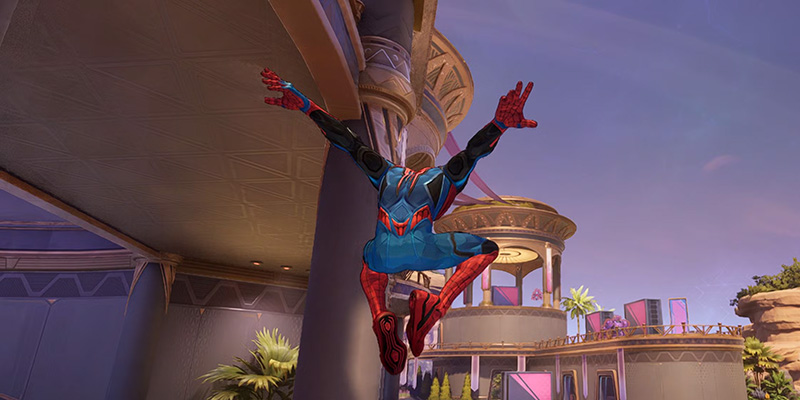
What is It?
Wall-climbing and wall-running refer to the innate or ability-driven capacity of certain heroes to ascend vertical surfaces, cling to them, and even sprint across them. This allows for flanking maneuvers, quick escapes, and access to elevated positions that can dictate the flow of a fight.
How to Stick & Move
Typically, heroes initiate a wall-climb or wall-run by jumping towards a scalable surface and then pressing or holding the Spacebar upon contact. For instance, Spider-Man begins his Wall Crawl by pressing Space, and can then sprint along the wall by pressing Left-Click. Black Panther initiates his wall-run, Subtle Step, by holding Space near a wall.
For enhanced control, particularly for heroes like Jeff the Land Shark, Spider-Man, Rocket Raccoon, and Venom, there's a character-specific setting called "direction of wall crawling." Changing this from the default "advance vertically upwards" to "advance towards crosshair" allows for much greater maneuverability, enabling diagonal and horizontal movement on walls.
Key Wall-Crawling Heroes & Their Quirks
Several heroes excel at wall traversal, each with unique nuances:
These agile characters can crawl and sprint on walls with incredible speed. For finer control and to prevent accidentally sticking to walls during intense combat, players should explore the "Hold to Wall Crawl" option in Spider-Man's settings.
Rocket's "Wild Crawl" allows him to scale surfaces, and he possesses a particularly potent technique: using his Jetpack Dash while climbing for a massive vertical boost, effectively launching him upwards.
T'Challa can run along walls using his Subtle Step ability. However, it's noted that he can only ascend walls vertically, regardless of settings.
Lin Lie has a unique wall interaction, ascending walls horizontally while simultaneously gaining height.
Timing, Duration, and Detaching
Generally, basic wall-climbing or wall-running doesn't appear to have a strict duration limit or an independent resource cost like a cooldown or charge for characters who possess it as a core interaction (e.g., Spider-Man's passive Wall Crawl). The "cost" is more about the time spent climbing and the potential exposure to enemy fire. To detach from a wall, players can typically jump away (often by pressing Spacebar again, possibly with a directional input) or simply move their character away from the surface. Black Panther, for example, can perform a jump after leaving a wall, adding another layer to his aerial maneuverability.
Tactical Uses: Beyond Just Going Up
The applications of wall traversal are vast. At its most basic, it's used for reaching high ground to gain superior sightlines, find safer positions, or set up ambushes. It's also invaluable for creating unexpected flanking routes or making a swift escape by breaking the enemy's line of sight. For some heroes, wall movement can even be a faster way to traverse certain sections of a map compared to ground travel.
| Hero | Activation Method | Unique Trait/Tip |
|---|---|---|
| Spider-Man | Jump to wall + Space (Hold to Wall Crawl recommended) | Left-Click to sprint on wall. Change "direction of wall crawling" to "advance towards crosshair" for more control. |
| Venom | Jump to wall + Space | Similar to Spider-Man; "advance towards crosshair" setting beneficial. |
| Rocket Raccoon | Jump to wall + Space (Wild Crawl) | Can use Jetpack Dash while climbing for a significant vertical boost. "Advance towards crosshair" setting useful. |
| Black Panther | Jump to wall + Hold Space (Subtle Step) | Can only ascend vertically. Can jump after detaching. |
| Iron Fist | Jump to wall + (assumed Space) | Ascends horizontally while gaining vertical height. |
Dash & Dash-Like Abilities
In the fast-paced skirmishes of Marvel Rivals, a quick burst of speed can mean the difference between securing a kill and becoming a casualty. "Dash" abilities, while varying from hero to hero, provide this crucial agility, allowing for rapid repositioning, aggressive engagement, or life-saving evasion. These are not typically universal mechanics bound to a single key for all heroes but rather a common archetype of ability, often found on the Left Shift key.
Activation & Direction
Dashes are generally activated by a single key press. For instance, Rocket Raccoon's Jetpack Dash is triggered by Left Shift. The direction of the dash is most commonly determined by the player's current movement input or the direction their crosshair is facing at the moment of activation. This requires players to be intentional with their facing and movement to ensure the dash takes them where they intend to go.
Key Dashing Heroes & Their Mechanics
Numerous heroes boast dash or dash-like abilities, each with its own characteristics:
Can be used on the ground, in mid-air for horizontal movement, or even combined with wall-climb for a substantial vertical boost. Tactical uses range from quick evasion and repositioning to reaching advantageous high-ground positions.
Vicious Rampage is primarily used for agile movement and can cancel primary fire animation. Feral Leap functions as both movement and crowd control by leaping to snatch enemies.
Stellar Shift grants 0.37 seconds of invincibility and instantly reloads Element Guns. Invaluable for dodging key enemy abilities, emergency escapes, or quick mid-fight reloads.
Timing Windows: Startup, Duration, Recovery
While precise frame data is not readily available, dashes are generally characterized by quick startup animations, allowing for rapid execution. The duration of the dash itself is typically brief, providing that burst of movement. Some dashes, like Star-Lord's Stellar Shift, include crucial invincibility frames during their animation, making them powerful defensive tools if timed correctly. Players should also be aware that some dashes might have a slight recovery animation, during which they might be vulnerable if the dash doesn't lead them to safety.
Costs: Cooldowns & Charges
As highlighted, the primary "cost" for using dash abilities comes in the form of cooldowns and, for some heroes, a system of charges. Rocket Raccoon's Jetpack Dash (2 charges, 6s cooldown per charge) and Star-Lord's Stellar Shift (2 charges, 5s cooldown per charge) are prime examples. Effective resource management is paramount; exhausting all dash charges or using an ability with a long cooldown at an inopportune moment can leave a hero vulnerable and without an escape option.
Tactical Uses: The Dash Dance
The applications of dash abilities are diverse and integral to high-level play:
- Engagement: Quickly closing the distance to get within effective range of an enemy, as seen with Wolverine's Vicious Rampage.
- Evasion: Nimbly dodging enemy attacks, projectiles, or devastating area-of-effect abilities. Star-Lord's Stellar Shift is particularly adept at this due to its invincibility frames.
- Repositioning: Swiftly moving to more advantageous cover, securing high ground, or rotating to support teammates in another part of the fight.
- Momentum: Certain dashes can be used to gain or maintain forward momentum, especially when chained with other actions or used in specific ways, like Star-Lord's burst usage of Rocket Propulsion.
Grapples & Swings
Few movement mechanics in gaming are as iconic or exhilarating as the ability to swing through the air or grapple across distances with superhuman agility. In Marvel Rivals, heroes like Spider-Man and Venom bring this fantasy to life, using their web-slinging and symbiotic tendrils to traverse the battlefield in ways that redefine mobility. Moon Knight also joins this acrobatic club with his own distinct grappling hooks. These abilities are often character-defining, allowing for unparalleled map traversal, surprise engagements, and daring escapes.
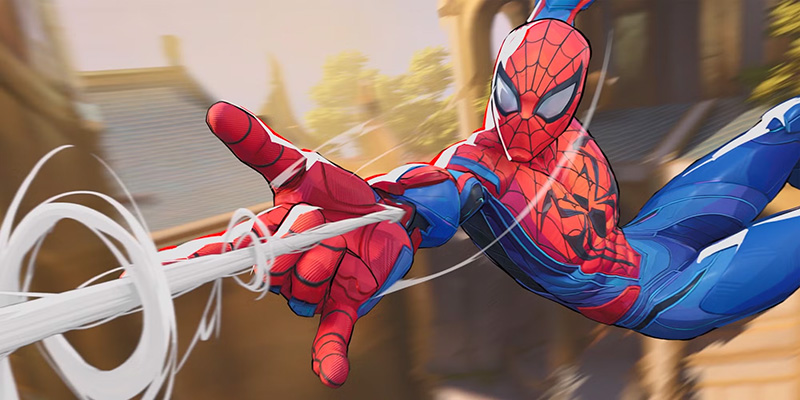
Activation & Targeting
Grapple and swing abilities are typically activated with a key press, commonly Left Shift for characters like Spider-Man and Venom. The success and trajectory of these movements are heavily reliant on precise crosshair placement. Where the player aims determines the anchor point for their swing or grapple, making keen awareness and quick targeting essential. For Spider-Man, aiming the crosshair above the horizontal axis initiates a Web-Swing, while aiming below it triggers a Web-Zip. Venom's Venom Swing involves launching webbing forward in the desired direction.
Key Grappling/Swinging Heroes & Their Mechanics
Spider-Man: The Web-Slinging Icon
Web-Swing (Shift): The quintessential Spidey move. He has 3 charges, with each charge taking 6 seconds to recharge, and a maximum webbing length of 30 meters. This is his primary tool for engaging enemies, disengaging from unfavorable fights, and generally creating chaos with his unpredictable movement. A key aspect is that momentum from a swing carries until Spider-Man uses his double jump, so avoiding unnecessary double jumps is crucial for covering maximum distance.
Web-Zip (Shift, aim below horizontal): This is a quicker, more direct dash-like movement. It can be animation-canceled by firing a Web-Cluster (Right-Click) just before landing, followed by a jump, to perform a "bunny hop" technique for incredibly fast traversal across flat ground.
Venom: The Symbiotic Swinger
Venom Swing (Shift): Venom launches a tendril for a singular, powerful swing. This ability has an 8-second cooldown and a maximum webbing length of 30 meters. Similar to Spider-Man, disabling "auto-swing" in settings is highly advised for greater control over swing trajectories and attachment points. Venom Swing can be used to aggressively engage, make swift escapes, or even stall progress on objectives by remaining airborne or hard to hit.
Moon Knight: The Grappling Guardian
Moonlight Hooks: Marc Spector utilizes grappling hooks that allow him to latch onto targets (enemies or allies) or surfaces and pull himself rapidly forward. This makes it an excellent tool for initiating combat, closing gaps, or quickly retreating from danger. Players should be mindful of its cooldown to avoid being caught immobile after use.
Timing, Momentum, & Trajectory Control
Mastering swings and grapples is all about understanding timing and momentum. For web-swingers, looking in the direction you intend to travel significantly influences your trajectory. Maintaining momentum is key; for Spider-Man, this means judicious use of his double jump and learning advanced techniques like b-hopping. For Venom, skillful camera control can lead to wider swing arcs for covering more horizontal distance or greater vertical gain for reaching high places.
Tactical Uses: The Aerial Dance
The applications of these abilities are as diverse as the heroes who wield them:
- Rapid Traversal: Moving across vast distances on the map far quicker than most other heroes.
- Engagement: Swinging or grappling in for surprise attacks, often from elevated positions or unexpected flank angles, catching enemies off-guard.
- Disengagement: Making swift and often unpredictable escapes when a fight turns unfavorable or health is low.
- Objective Play: Venom, for example, can use his swing to effectively stall on objectives, making himself a difficult target to pin down while contesting.
- Creating Chaos: Spider-Man is a master of this, constantly swinging in and out of engagements, disrupting enemy formations and drawing attention.
| Hero | Ability Name | Activation | Key Resource | Pro Tip |
|---|---|---|---|---|
| Spider-Man | Web-Swing | Shift | 3 Charges, 6s recharge per charge | Disable "Easy Swing" in settings. Practice b-hopping for max momentum. |
| Spider-Man | Web-Zip | Shift (aim low) | Uses a Web-Swing charge | Key for b-hopping and quick ground dashes. |
| Venom | Venom Swing | Shift | 8s Cooldown | Disable "auto-swing." Use for objective stalling and aggressive repositioning. |
| Moon Knight | Moonlight Hooks | (Assumed Shift/E) | Cooldown varies | Versatile for engaging or escaping. Be mindful of cooldown timing. |
Movement Practice Drills
Knowing how dash, grapple, and wall-climb work is one thing; executing them flawlessly under pressure is another. Like any superhero honing their powers, dedicated training is essential. Fortunately, Marvel Rivals provides the Practice Range, an ideal environment to get comfortable with movement mechanics without the stress of a live match. Within the Practice Range, players can even toggle "No Ability Cooldown" to focus purely on the feel and execution of abilities, and explore various training areas like the Target Practice Area or the Timed Practice Range for more structured drills.
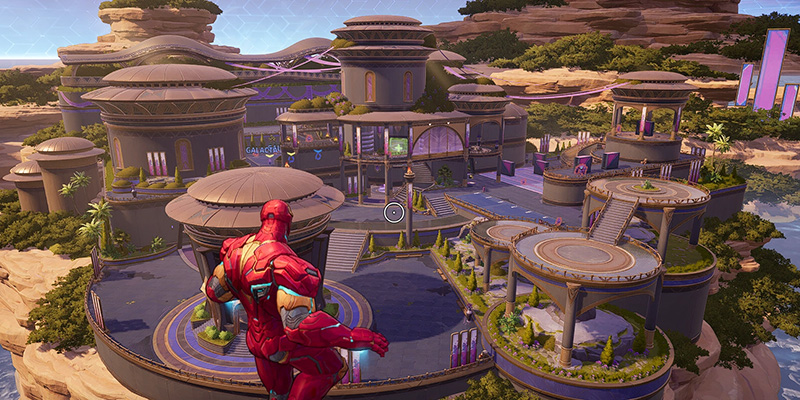
Your Personal Training Montage: The Practice Range
Enter the Practice Range and prepare for your training montage. These drills are designed to build muscle memory and refine control over the core movement mechanics.
Drill 1: Wall-Climb & Wall-Run Agility Course
Objective: Achieve consistent wall attachment, smooth transitions between surfaces, precise directional control, and quick detaches or wall-jumps.
- Exercise A (Attachment & Basic Climb): Select a tall, unbroken wall. Practice jumping towards it and consistently attaching. Climb to the very top. Descend and repeat this 10 times, focusing on the initial stick.
- Exercise B (Directional Control): For heroes like Spider-Man, Venom, and Rocket Raccoon, go into their individual settings and change "direction of wall crawling" to "advance towards crosshair". Once set, practice climbing diagonally, moving horizontally across a wall, and making smooth turns while maintaining contact.
- Exercise C (Wall-to-Wall Jumps): Find two walls that are relatively close and parallel, or walls forming a corner. Practice climbing partway up one wall, then jumping off to seamlessly attach to the adjacent wall.
- Exercise D (Rocket's Wall-Dash Boost): As Rocket Raccoon, this is a key technique. Hold jump (Spacebar) to initiate a wall climb, and immediately activate your Jetpack Dash (Shift). The timing is crucial for achieving maximum vertical boost.
Drill 2: Dash Precision & Reflex Training
Objective: Develop accurate dashing, effective dodging, and the ability to seamlessly combine dashes with other combat actions.
- Exercise A (Point-to-Point Dashing): In any open area of the Practice Range, pick two distinct visual markers. Practice dashing precisely from one marker to the other. For heroes with multi-charge dashes like Rocket Raccoon or Star-Lord, practice using all charges efficiently.
- Exercise B (Dash-Melee/Shoot): Practice dashing towards a stationary training bot and immediately performing a melee attack or firing a primary weapon shot upon arrival.
- Exercise C (Simulated Dodge): If the Practice Range has training bots that fire projectiles, use them. Practice using your dash abilities—especially those with invincibility frames like Star-Lord's Stellar Shift—to actively dodge the incoming fire.
Drill 3: Grapple/Swing Fluidity & Target Practice
Objective: (Primarily for Spider-Man and Venom) Master maintaining momentum during swings, accurately targeting swing points, and achieving smooth transitions between swings or into other actions.
- Exercise A (Momentum Swings): Find a large, open area with numerous structures to serve as swing points. Practice chaining multiple swings together, focusing on maintaining and building speed and height. For Spider-Man, specifically practice not using your double jump mid-swing chain, as this often kills momentum needed for long-distance traversal.
- Exercise B (Precision Landing): Choose specific, small platforms, narrow ledges, or distinct spots on structures. Practice swinging and landing precisely on these chosen targets.
- Exercise C (Spider-Man's B-Hop - Advanced): This technique requires practice. Find a relatively flat, open area. The sequence is: initiate a Web-Zip by aiming low with Shift, then, just before Spider-Man touches the ground, quickly fire a Web-Cluster (Right-Click) and immediately press Jump (Spacebar). The timing of the Web-Cluster and Jump is critical.
General Practice Tips
Begin slowly, concentrating on one mechanic or exercise at a time until comfortable. Utilize the "No Ability Cooldown" option in the Practice Range initially to get a feel for the inputs without worrying about resource management. Once the basic execution feels natural, switch off "No Ability Cooldown" to practice with actual timers and charges. Dedicating just 10-15 minutes to these drills in the Practice Range before jumping into live matches can significantly accelerate improvement.
Advanced movement techniques, such as Spider-Man's b-hopping or Wolverine's animation cancels, demand precise timing and a specific sequence of inputs. These complex maneuvers are rarely intuitive and are unlikely to be mastered simply by playing matches without focused effort. The Practice Range provides the crucial controlled environment needed to break down these techniques step-by-step. Repetitive, focused practice—often called deliberate practice—is the key to building the muscle memory required for these inputs.
Map Traversal & Shortcuts
Mastering individual movement abilities is only half the battle; true domination comes from understanding how to apply those skills to the unique landscapes of each Marvel Rivals map. Map knowledge is undeniably power. Familiarity with layouts, critical chokepoints, health pack locations, and, most importantly, vertical elements is fundamental. Your dash, grapple, and wall-climbing abilities are the keys that unlock a map's full strategic potential, allowing access to shortcuts and advantageous positions others can only dream of.
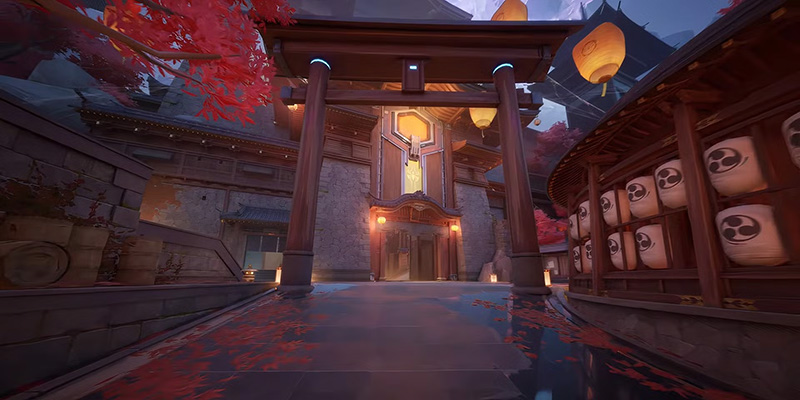
Unlocking Map Shortcuts with Core Movement
The diverse maps in Marvel Rivals are riddled with opportunities for nimble heroes to bypass conventional routes, execute surprising flanks, or reach objectives with astonishing speed. Here are a few examples, drawing from common map features and strategic advice:
This objective is often very exposed. Heroes proficient in wall-climbing, those with flight, or characters like Spider-Man and Moon Knight using grapples can seize the crucial high ground surrounding the point, offering commanding views and firing angles. An advanced tactic involves characters like Spider-Man or Venom using their swings to briefly go off the map to bypass heavily defended chokepoints entirely.
This area features "very tall high ground near the huge window that only fliers and climbers can access". This is a prime example of a location designed specifically for characters with strong vertical mobility, accessible via wall-climbing or abilities like Rocket Raccoon's wall-dash boost.
When attacking the first point, the main choke can be widened by destroying walls to the left. Mobile heroes can then use dashes, wall-climbs, or grapples to exploit these new openings, accessing flank routes and elevated positions that defenders might not anticipate.
High Ground: The King of the Hill Advantage
The strategic value of high ground cannot be overstated. Wall-climbs, vertical dashes (like Rocket's wall-boosted Jetpack Dash or Wolverine using Vicious Rampage to reach ledges), and grapple/swing abilities are the primary means by which players can seize and maintain these dominant positions. From an elevated vantage point, heroes benefit from better visibility of the battlefield, natural cover, and superior angles of attack onto opponents below.
Playing with Blocks: Destructible Environments
A unique feature of Marvel Rivals is its dynamic, destructible environments. Many parts of the map, from bridges to walls and platforms, can be broken, and these changes directly interact with movement strategies:
- Offensive Destruction: Players can destroy a bridge an enemy is standing on, potentially sending them plummeting or into a disadvantageous position.
- Creating Pathways: Breaking down walls can open up new sightlines for ranged heroes or create entirely new pathways for flanks or objective pushes.
- Denial and Escape: Destruction can be used defensively to deny enemies access to key perches or, conversely, to create an improvised escape route when cornered.
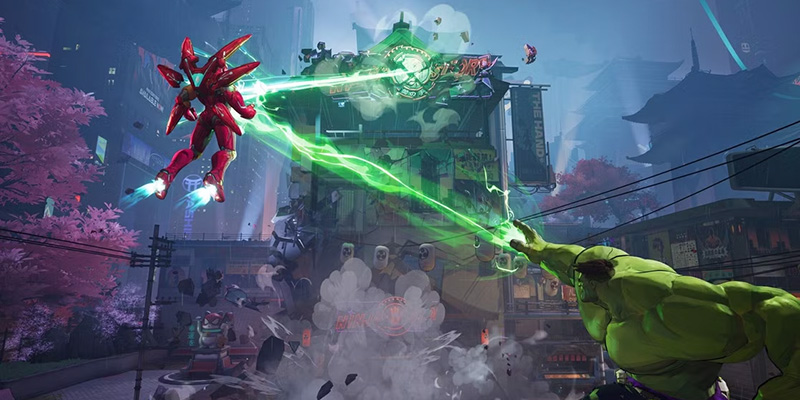
The maps in Marvel Rivals are not static arenas but dynamic movement puzzles. While they have fixed layouts, the inclusion of destructible terrain and features that specifically cater to certain movement types means the "solution" to traversing a map can change dramatically mid-match. Understanding which heroes can best exploit particular map features—a skilled wall-climber on a map with numerous vertical shortcuts, for instance—can become a significant part of team composition and strategic counter-picking.
Advanced Traversal Tips
Once the fundamentals of dashing, grappling, and wall-climbing are ingrained, the path to true movement mastery involves weaving these skills together, discovering hero-specific techniques, and developing a deeper understanding of their tactical applications. This is where players transition from simply moving to truly dancing across the battlefield.
Synergy in Motion: Combining Core Movements
The most fluid and effective movement often comes from seamlessly combining different actions. Instead of thinking of each movement ability in isolation, consider how they can flow into one another:
- Initiate a wall-climb to gain initial height, then dash horizontally across a gap to an adjacent rooftop.
- Perform a quick dash towards a wall, then immediately transition into a wall-run to bypass a chokepoint or surprise an enemy around a corner.
- Use a grapple or swing to reach a high vantage point, then dash off it to initiate an aerial attack or quickly descend to an objective.
Spider-Man, for example, is noted for his versatility stemming from combining Wall Crawl, Web-Swing, and his double jump. Similarly, Moon Knight's effectiveness comes from blending his hooks, glides, and jumps.
Hero-Specific Advanced Tech
Beyond general combinations, many heroes have unique advanced techniques tied to their core movement abilities:
Rocket Raccoon's Wall-Dash Boost
This potent trick provides an exceptional vertical leap, perfect for surprise high-ground captures or escaping over tall obstacles.
Spider-Man's Web-Zip Cancel & B-Hopping
A cornerstone of high-level Spider-Man play. The precise timing cancels the Web-Zip's recovery and propels Spider-Man forward with significant momentum.
The Power of Animation Canceling
Animation canceling is a technique where one action is used to cut short the ending animation of a previous action, allowing for faster follow-ups or safer transitions. Movement abilities are often prime candidates for this. Spider-Man's Web-Zip cancel is a clear example. Iron Man can reportedly use a melee attack to cancel his missile animation. Learning these cancels can shave precious frames off ability sequences, leading to quicker combos or more responsive movement.
Aggressive vs. Defensive Movement Mindset
True mastery involves adapting movement to the demands of the situation:
- Aggressively close gaps on enemies
- Execute surprise flanks
- Secure advantageous high ground for attacks
- Pursue fleeing targets
- Rapid escapes from danger
- Breaking line of sight from attackers
- Quickly reaching health packs
- Repositioning to support teammates
A critical aspect of this decision-making is understanding the difference between a pure movement skill and a damage-dealing ability that also happens to provide mobility. Using a damage/mobility hybrid for an attack might leave a hero without an escape option if that ability goes on cooldown.
Pro Positioning & Sensitivity
Effective movement is amplified by smart positioning. Being in the right place at the right time allows movement abilities to be used for maximum impact, whether offensively or defensively. Furthermore, players should continuously experiment with their camera sensitivity settings. Higher sensitivity can enable faster turns and target acquisition, which directly aids in executing complex movement techniques and reacting to threats more swiftly.
Mastering individual mechanics is the foundational step. The subsequent level of play involves understanding the intricate interplay between these mechanics, the hero's complete kit, the specific map environment, and the actions of opponents. This evolves into a constant "chess match" of predicting enemy movements, meticulously managing cooldowns, and selecting the optimal movement tool for each unique situation—be it to engage, disengage, reposition, or juke an incoming attack.
Conclusion: Move Like a Marvel Legend!
The path to becoming a formidable force in Marvel Rivals is paved with agility, precision, and an intimate understanding of movement. We've journeyed through the core mechanics that will elevate any player's game: the art of wall-climbing and wall-running for unparalleled vertical control and flanking opportunities; the swiftness of dash abilities for lightning-fast engagements and evasions; and the exhilarating freedom of grapples and swings for dynamic, map-spanning traversal.
The key takeaways are clear: movement is not just a utility but a central pillar of skill expression in Marvel Rivals. Mastering these abilities requires dedicated practice in the Practice Range to build muscle memory for basic execution and advanced techniques alike. Coupled with sharp map knowledge, these skills will unlock shortcuts, secure dominant positions, and allow for outplays that will leave opponents bewildered.
Don't be discouraged by initial fumbles; every misjudged swing or mistimed dash is a lesson learned. Keep practicing the drills, experiment boldly in your matches, and consciously analyze how movement impacts every engagement. Ultimately, exceptional movement makes a player an elusive and unpredictable target; predictable movement patterns, conversely, can turn even a skilled player into "easy prey". Advanced traversal is about outthinking and outmaneuvering opponents through the intelligent, skillful, and often creative application of these core movement principles.
So get out there, hero! Master dash, grapple and wall-climb mechanics fast with this Marvel Rivals movement guide and etch your name in legend, one slick maneuver at a time! The battlefields await your dance.
